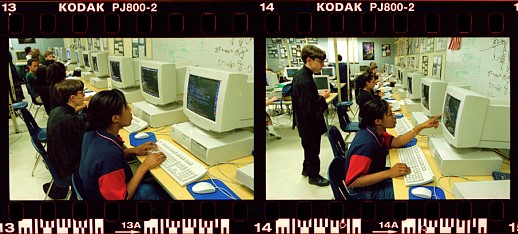
Teachers assign a required task – the same task for all students. This approach serves as a two-way communication stream that helps teachers understand where all students are and communicates to students where they need to be.


Understand what they are expected to know.

Assess where students are and clearly communicate expectations of knowledge.

Despite “doing well” in school, many students are not prepared for college-level work because they are not given grade-appropriate assignments. It is essential that all students are engaged in meaningful tasks and that students experience optimal challenge. Assigning tasks to students falls on a continuum from total teacher assignment to total student choice. For example, total teacher assignment might be, “Read this book” or “Complete these five problems.” On the other extreme, total student choice might sound like, “Choose a book from the library” or “Complete any five problems.” In the middle of the continuum is teacher-structured student choice – sounding like, “Choose any book from this box of books that are both on topics that your interested in and are written at your current independent reading level” or “Complete problems 1 through 4 and choose two additional problems from 5-10.”
Assignment is important because learners, being novices in the discipline, might not know what they should be working on next. Learners might choose tasks that they expect will be successful and avoid tasks that seem challenging. Teachers, given the opportunity to listen and observe learners, may at times be able to assign tasks that will efficiently move learners forward.
Total teacher assignment should be used with specific teacher intention. Too much assignment results in too little student autonomy and a compliance type of learning culture. Too much student choice may result in students not exploring or taking risks in their learning. Students may avoid engaging in unknown or rigorous tasks. However, the assignment to choice continuum is an element of every learning task and experience. Teachers can change the amount of choice given to students at any time through their directions to adjust the level of challenge and/or student autonomy.
TNTP. (2018). The Opportunity Myth: What Students Can Show Us About How School Is Letting Them Down—and How to Fix It. https://tntp.org/assets/documents/TNTP_The-Opportunity-Myth_Web.pdf
Image Citation
Ferrell, S. J., photographer. (1999) Thomas Jefferson High School for Science and Technology. , 1999. [7 April] [Photograph] Retrieved from the Library of Congress, https://www.loc.gov/item/2019643892/.

